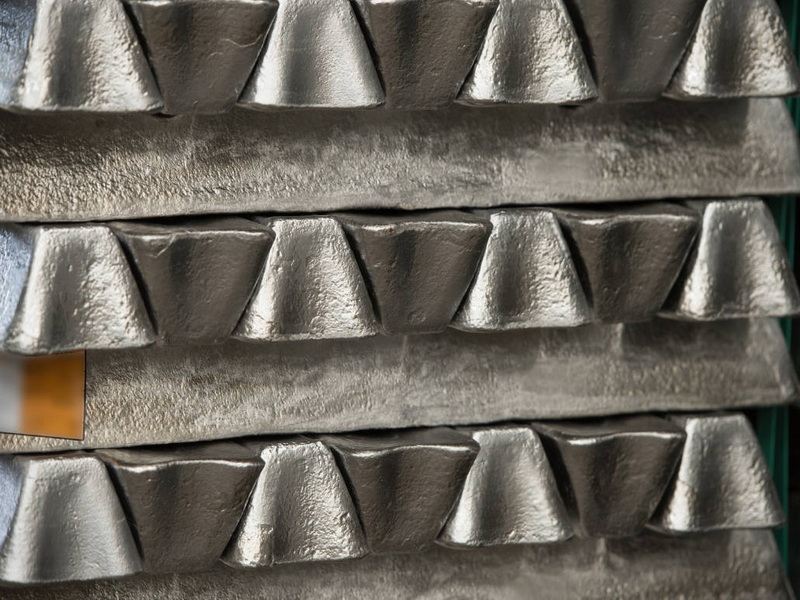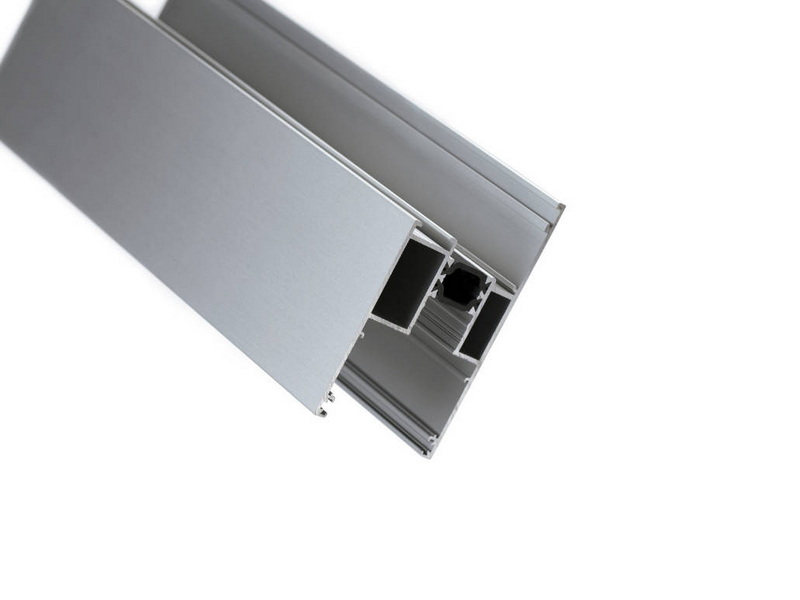English 




Views: 222 Author: Astin Publish Time: 2025-03-28 Origin: Site



Content Menu
● Introduction to Aluminum Profiles
● Factors Influencing Durability
● Comparison of Aluminum Alloys
● Sustainability and Environmental Impact
>> 1. What factors influence the durability of aluminum profiles?
>> 2. Which aluminum alloy is known for its high strength and durability?
>> 3. What are the primary uses of T profiles in industries?
>> 4. How does the surface treatment of aluminum profiles affect their durability?
>> 5. Which aluminum profile type is best suited for heavy load-bearing applications?
Aluminum profiles are widely used across various industries due to their exceptional combination of strength, durability, and lightweight characteristics. These profiles are formed through an extrusion process, where heated aluminum billets are pushed through a die to create versatile shapes tailored to meet specific industry requirements. In this article, we will explore the different types of aluminum profiles, their properties, and applications to determine which type offers the best durability.

Aluminum profiles are valued for their corrosion resistance, wear resistance, and ability to withstand varying environmental conditions. They are used in construction for window frames and curtain walls, in the automotive industry for car bodies and engine parts, and in aerospace for aircraft structures. The durability of aluminum profiles is enhanced by their natural oxide layer, which acts as a protective barrier against corrosion. This layer can be further augmented through surface treatments like anodizing or painting.
Aluminum profiles come in various shapes and designs, each suited for different applications:
T profiles are ideal for versatile connections due to their T-shaped structure. They are often used in modular systems, assembly projects, and support structures, providing the strength needed to support heavy loads in sectors like construction and automotive. Their versatility allows them to be easily integrated into existing systems, making them a popular choice for DIY projects and industrial applications.
Sigma profiles balance lightness and strength with their S-shaped structure. They are preferred in projects requiring durability and flexibility, such as in the automotive and electronics sectors, where resistance against vibrations and impacts is crucial. The unique shape of sigma profiles allows for efficient distribution of stress, enhancing their overall durability.
Bar profiles are flat or round and are used for reinforcement in construction and support structures in the automotive industry. Despite their simple structure, they are durable and lightweight, making them suitable for aesthetic applications like interior designs and furniture accessories. Their straightforward design facilitates easy installation and integration into various projects.
Box profiles have a closed structure and are used in heavy load-bearing elements like roofs and columns in construction. They offer aesthetics and durability in furniture and decoration sectors. The closed structure provides additional strength and stability, making them ideal for applications where structural integrity is paramount.
L profiles are used for corner supports with their L-shaped angled structure. They provide flexibility in modular systems, especially in corner joints and supports, enhancing the robustness of building systems by facilitating easy assembly. Their angular design allows for secure connections, ensuring stability in both static and dynamic environments.

Several factors influence the durability of aluminum profiles:
Aluminum alloys like 6061 and 7075 are known for their high strength and durability. The presence of alloying elements such as copper, zinc, magnesium, and silicon enhances the mechanical properties of aluminum. For instance, the addition of magnesium improves corrosion resistance, while silicon enhances castability.
Processes like annealing, quenching, and aging significantly impact the strength and durability of aluminum profiles. Heat treatment can improve the mechanical properties, making the profiles more resistant to wear and corrosion. For example, quenching followed by aging can increase the yield strength of aluminum alloys, enhancing their ability to withstand stress.
Anodizing and powder coating provide additional protection against environmental wear and tear, extending the lifespan of aluminum profiles. Anodizing, in particular, creates a hard, porous layer that can be dyed in various colors, offering both aesthetic appeal and enhanced durability.
Different aluminum alloys have distinct properties that affect their durability:
- 6061 Aluminum: Known for its high strength, hardness, and corrosion resistance, making it more durable than 6063. It is often used in aerospace and automotive applications where high fatigue strength is required. The presence of magnesium and silicon in 6061 enhances its weldability and formability.
- 6063 Aluminum: Offers better plasticity and is easier to form into complex shapes. It is commonly used in architectural applications where aesthetics and corrosion resistance are important. However, it has lower strength compared to 6061.
- This alloy is renowned for its exceptional strength and is used in high-stress applications. However, it has lower corrosion resistance compared to 6061 and 6063. The high zinc content in 7075 contributes to its high strength but also makes it more susceptible to corrosion.
The choice of aluminum profile type depends on the specific application:
- Construction: Box and L profiles are commonly used for structural elements due to their high load-bearing capacity and ease of assembly. These profiles are essential in building frames, windows, and doors, where durability and stability are crucial.
- Automotive: Sigma and T profiles are preferred for their strength and flexibility, which are crucial for withstanding vibrations and impacts. They are used in car bodies, engine mounts, and suspension systems.
- Aerospace: High-strength alloys like 7075 are used for aircraft structures due to their ability to withstand harsh conditions. The lightweight nature of aluminum profiles is particularly beneficial in aerospace, where reducing weight is critical for fuel efficiency.
In recent years, aluminum profiles have been increasingly used in emerging technologies:
- Renewable Energy: Aluminum profiles are used in solar panel frames and wind turbine structures due to their corrosion resistance and ability to withstand harsh weather conditions.
- Electronics: Aluminum is used in electronic enclosures and heat sinks due to its excellent thermal conductivity and durability.
Aluminum profiles are also valued for their sustainability. Aluminum is fully recyclable, which reduces waste and conserves natural resources. The recycling process requires only about 5% of the energy needed to produce primary aluminum, making it an environmentally friendly choice for industries seeking to reduce their carbon footprint.
Aluminum profiles offer a unique combination of strength, durability, and lightweight characteristics, making them versatile across various industries. The durability of these profiles is influenced by factors such as alloy composition, heat treatment, and surface treatments. Among the different types, 6061 aluminum profiles stand out for their exceptional strength, hardness, and corrosion resistance, making them the best choice for applications requiring high durability, such as aerospace and automotive industries.

- The durability of aluminum profiles is influenced by factors such as alloy composition, heat treatment, and surface treatments like anodizing or powder coating.
- 6061 aluminum is renowned for its high strength, hardness, and corrosion resistance, making it more durable than other alloys like 6063.
- T profiles are primarily used in modular systems, assembly projects, and support structures due to their ability to support heavy loads, especially in construction and automotive sectors.
- Surface treatments such as anodizing or powder coating provide additional protection against environmental wear and tear, extending the lifespan of aluminum profiles.
- Box profiles are ideal for heavy load-bearing structural elements due to their closed structure and high load-bearing capacity.
[1] https://www.linkedin.com/pulse/understanding-strength-durability-aluminum-profiles-vincent-zhou
[2] https://kenanmetal.com/aluminum-profile-types-and-usage-areas
[3] https://www.cnclathing.com/guide/2020-vs-4040-vs-8020-aluminum-extrusion-comparison-properties-strength-applications-cost
[4] https://www.wellste.com/choosing-between-6061-and-6063-a-comprehensive-guide/
[5] https://www.premiumparts.com/blog/7-factors-to-consider-in-aluminium-profile-selection
[6] https://shop.machinemfg.com/aluminum-6061-vs-6063-whats-the-difference/
[7] https://jmaluminium.com/selecting-right-aluminium-profiles/
[8] https://www.kenenghardware.com/what-are-the-differences-of-6061-aluminum-7075-aluminum-and-6063-aluminum/
[9] https://jmaluminium.com/different-types-of-aluminium-profiles/
[10] https://jmaluminium.com/aluminium-profiles-durable-luggage/
[11] https://aluminums.en.made-in-china.com/product/lxaYKqgjsiRt/China-Top-Ranking-Quality-Sliding-Window-and-Door-Aluminium-Profiles-with-Stable-Quality.html
[12] https://industrialmetalservice.com/metal-university/6061-aluminum-vs-6063/
[13] https://www.profall.com/en/blog/the-difference-between-steel-and-aluminum-comparing-profiles
[14] https://www.chaluminium.com/how-to-choose-the-right-aluminum-profiles
[15] https://www.shenghai-alu.com/article/how-to-choose-industrial-aluminium-profile-model.30
[16] https://www.gapengineering.com.au/blog/which-size-profile-is-the-right-one-for-my-project/
[17] https://www.krcaluprofiles.com/tags/comparing-different-types-of-aluminum-profiles-for-cabinets/
[18] https://amcaluminum.ph/how-strong-is-aluminum/
[19] https://bor-usa.com/product-category/aluminum-profiles/
[20] https://www.retop-industry.com/news/aluminium-alloy-profiles.html
Top Aluminum Furnitures Manufacturers and Suppliers in Czech Republic
Top Aluminum Furnitures Manufacturers and Suppliers in Poland
Top Aluminum Furnitures Manufacturers and Suppliers in Belgium
Top Aluminum Furnitures Manufacturers and Suppliers in Finland
Top Aluminum Furnitures Manufacturers and Suppliers in Denmark
Top Aluminum Furnitures Manufacturers and Suppliers in Greece
Top Aluminum Furnitures Manufacturers and Suppliers in Portugal
Top Aluminum Furnitures Manufacturers and Suppliers in Austria
Top Aluminum Furnitures Manufacturers and Suppliers in Norway
Top Aluminum Furnitures Manufacturers and Suppliers in Sweden
